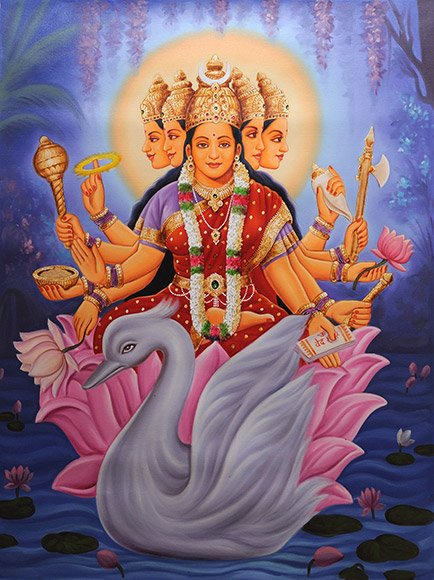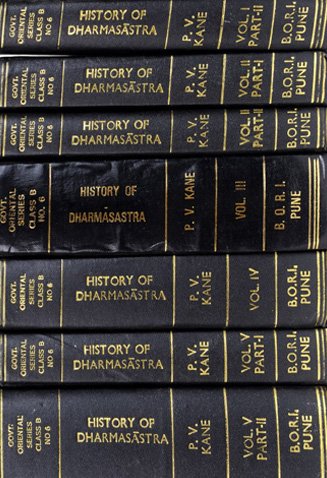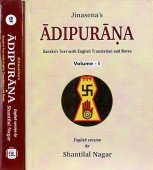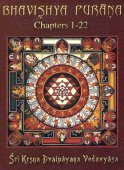Agnipurana, Agnipurāṇa, Agni-purana: 12 definitions
Introduction:
Agnipurana means something in Hinduism, Sanskrit. If you want to know the exact meaning, history, etymology or English translation of this term then check out the descriptions on this page. Add your comment or reference to a book if you want to contribute to this summary article.
In Hinduism
Purana and Itihasa (epic history)
Source: archive.org: Puranic EncyclopediaAgnipurāṇa (अग्निपुराण).—General information. This is one of the eighteen Purāṇas ascribed to Vyāsa. It is believed that this Purāṇa was originally given orally (as advice) by Agnideva to many sages, devas and Sage Vasiṣṭha. It is a vast comprehensive work dealing with every subject of importance. To give a copy of this book to a good Brahmin on the Full Moon day in the month of Mārga Sīrṣa is supposed to be a highly virtuous and meritorious deed. Contents. This large Purāṇa consists of about 420 chapters. It deals in detail with the following subjects: The Daśāvatāras of Mahāviṣṇu; Rāmāyaṇa; Mahābhārata; rules and injunctions relating to the worship of various gods (devapūjāvidhis); installation of idols in temples (devatāpratiṣṭhā); Svapnamantras; astrology; architecture and sculpture; Āyurveda; Viṣavaidya (treatment of poisons from Snakebite etc.); the principles of the drama (Nāṭaka) and other allied arts; figures of speech and all alaṃkāras in general; and physiology of the human body. All these subjects are treated in a detailed and scientific manner. (See full article at Story of Agni-purāṇa from the Puranic encyclopaedia by Vettam Mani)
Source: Cologne Digital Sanskrit Dictionaries: The Purana IndexAgnipurāṇa (अग्निपुराण).—One among the Mahāpurāṇas comprises 15400 ślokas. See agni.*
- * Bhāgavata-purāṇa, XII. 7. 23; 13. 5.
Agnipurāṇa (अग्निपुराण) refers to one of the eighteen Major Puranas according to the Matsyapurāṇa and other traditional lists of Puranic literature: a category of ancient Sanskrit texts which gives a huge contribution in the development of Indian literature.—The lists of eighteen Mahāpurāṇas (e.g., agnipurāṇa) and eighteen Upapurāṇas are not same everywhere, as some names are dropped in some references whereas some are included in others. It can be noticed that, except the Vāyuapurāṇa and the Śivapurāṇa, the names of the Mahāpurāṇas are similar in almost all the Purāṇas.

The Purana (पुराण, purāṇas) refers to Sanskrit literature preserving ancient India’s vast cultural history, including historical legends, religious ceremonies, various arts and sciences. The eighteen mahapuranas total over 400,000 shlokas (metrical couplets) and date to at least several centuries BCE.
Chandas (prosody, study of Sanskrit metres)
Source: Shodhganga: a concise history of Sanskrit Chanda literatureAgnipurāṇa (अग्निपुराण) deals with various subjects viz. literature, poetics, grammar, architecture in its 383 chapters and prosody is one among them. Introducing the prosodies in the dialogue form of Agni and a King, it deals with the entire science of prosody in 8 chapters (328-335) in 101 verses in total.
The Agnipurāṇa mentions Piṅgala as the ancient authority on prosody in the very beginning of its prosodic chapters. Chapter 328 of Agnipurāṇa introduces the prosody, it gives a summarized data on the gaṇas, laghu, guru etc. in this chapter. While introducing the gurutva of laghu letters, it adds the letter (varṇa) which stands just before jihvāmūlīya and upadhmānīya be considered as guru (along with others), even it is a laghu letter. This is a peculiar interpretation of Agnipurāṇa.

Chandas (छन्दस्) refers to Sanskrit prosody and represents one of the six Vedangas (auxiliary disciplines belonging to the study of the Vedas). The science of prosody (chandas-shastra) focusses on the study of the poetic meters such as the commonly known twenty-six metres mentioned by Pingalas.
Dharmashastra (religious law)
Source: Shodhganga: The saurapurana - a critical study (dharma)Agnipurāṇa (अग्निपुराण) should be donated (dāna) on the pratipad-tithi according to the Dharmaśāstra taught in the 10th century Saurapurāṇa: one of the various Upapurāṇas depicting Śaivism.—Accordingly, the donation of the various Purāṇas to various recipients on different tithis along with the merits thereof are given in the ninth chapter.—[...] Donation of the Agnipurāṇa to an Āhitāgni on the pratipad-tithi brings the result of rājasūya sacrifice.

Dharmashastra (धर्मशास्त्र, dharmaśāstra) contains the instructions (shastra) regarding religious conduct of livelihood (dharma), ceremonies, jurisprudence (study of law) and more. It is categorized as smriti, an important and authoritative selection of books dealing with the Hindu lifestyle.
Languages of India and abroad
Sanskrit dictionary
Source: DDSA: The practical Sanskrit-English dictionaryAgnipurāṇa (अग्निपुराण).—[agninā proktaṃ purāṇam] one of the 18 Purāṇas ascribed to Vyāsa. It derives its name from its having been communicated originally by Agni to the sage Vasiṣṭha for the purpose of instructing him in the two-fold knowledge of Brahman. Its stanzas are said to be 145. Its contents are varied. It has portions on ritual and mystic worship, cosmical descriptions, chapters on the duties of Kings and the art of war, a chapter on law, some chapters on Medicine and some treatises on Rhetoric, Prosody, Grammar, Yoga, Brahmavidyā &c. &c.
Derivable forms: agnipurāṇam (अग्निपुराणम्).
Agnipurāṇa is a Sanskrit compound consisting of the terms agni and purāṇa (पुराण).
Source: Cologne Digital Sanskrit Dictionaries: Cappeller Sanskrit-English DictionaryAgnipurāṇa (अग्निपुराण).—[neuter] T. of a Purāṇa.
Source: Cologne Digital Sanskrit Dictionaries: Aufrecht Catalogus Catalogorum1) Agnipurāṇa (अग्निपुराण) as mentioned in Aufrecht’s Catalogus Catalogorum:—Jones. 404. [Mackenzie Collection] 37. Io. 1001. Oxf. 7^a Paris. (B. 13). L. 681. Khn. 24. K. 20. B. 2, 2. Ben. 47. Bik. 183-85. Kāṭm. 1. Rādh. 38. NW. 458. 469. Oudh. Viii, 4. Xv, 22. Burnell. 187^a. P. 18. Bhk. 13. Poona. Ii, 60. Oppert. 2126. 3581. 7267. 7528. 7838. Ii, 25. 797. 3103. 3322. 3463. 7274. 7305. 9855. 10022. 10102. Rice. 70.
—Agnipurāṇe Addhācalamāhātmya. Burnell. 187^b.
—Arjunapuramāhātmya. [Mackenzie Collection] 63.
—Āgneyapurāṇamāhātmya. Burnell. 187^a.
—Uttaramayūramāhātmya. Burnell. 187^b.
—Uttaravedeśvaramāhātmya. Burnell. 187^b.
—Kāverīmāhātmya. [Mackenzie Collection] 67. Cop. 5. Burnell. 187^a. Taylor. 1, 159. Oppert. Ii. 4523.
—Kubjikāpūjāprakāra (ch. 143. 144). Bik. 185.
—Gayāmāhātmya. Burnell. 187^b.
—Gokureśvaramāhātmya. Burnell. 187^b.
—Gomateśvaramāhātmya. Burnell. 187^a.
—Tulākāverīmāhātmya. Burnell. 187^a.
—Dhanurmāsamāhātmya. Burnell. 187^a. Poona. 454.
—Dhanurvedaprakaraṇa. Burnell. 187^a.
—Dhūsarotpatti. Lahore. 1882, 1.
—Nīlakaṇṭhasthānamāhātmya. Burnell. 187^b.
—Paraśurāmasahasranāman. Bik. 185.
—Pratimālakṣaṇa. Burnell. 187^b.
—Prāsādalakṣaṇa. Burnell. 187^b.
—Phullāraṇyamāhātmya. [Mackenzie Collection] 78. Burnell. 187^a.
—Bhārgavanāmasahasra. Bhk. 18.
—Māghamāhātmya. Rādh. 40.
—Yamastotra. Burnell. 200^b.
—Yuddhajayārṇava. Burnell. 187^b.
—Tulasīmāhātmye Raṅganāthanāmaratna. Burnell. 200^b.
—Rājanīti. Burnell. 187^b.
—Vaṭāraṇyamāhātmya. Burnell. 187^b.
—Viṣṇukavaca. Burnell. 198^a.
—Veṅkaṭeśastotra. Burnell. 201^a.
—Vaiśākhamāhātmya. Burnell. 187^b.
—Vyavahāra. Burnell. 187^b.
—Śaraṇyapuramāhātmya. Burnell. 187^b.
—Śrīnivāsakavacāntastotrāṇi. Bhr. 575.
—Ṣaṭtriṃśatpadakajñāna (ch. 141). Bik. 184.
2) Agnipurāṇa (अग्निपुराण):—delete Io. 1001. Instead of L. 681 read 181, and for NW. 469 read 496. In Gayāmāhātmya read 187^a, in Gomateśvaramāhātmya read 187^b, in Bhārgavanāmasahasra read Bhk. 16.
3) Agnipurāṇa (अग्निपुराण):—Stein 199.
—Agnipurāṇe Kāverīmāhātmya. Rgb. 151.
—Pañcakrośayātrāvidhāna. Stein 199.
4) Agnipurāṇa (अग्निपुराण):—Ulwar 758. Agnipurāṇe Yuddhajayārṇava. Ulwar 1916.
5) Agnipurāṇa (अग्निपुराण):—As p. 1 (3 Mss.). Cs. 4, 1. 3 (inc.). Peters. 5, 166. Tod 40. Agnipurāṇe Tulākāverīmāhātmyam. Hz. 1073. Whish 52. 131. Winternitz Catalogue p. 245.
Source: Cologne Digital Sanskrit Dictionaries: Monier-Williams Sanskrit-English DictionaryAgnipurāṇa (अग्निपुराण):—[=agni-purāṇa] [from agni] n. Name of a Purāṇa.
[Sanskrit to German]
Sanskrit, also spelled संस्कृतम् (saṃskṛtam), is an ancient language of India commonly seen as the grandmother of the Indo-European language family (even English!). Closely allied with Prakrit and Pali, Sanskrit is more exhaustive in both grammar and terms and has the most extensive collection of literature in the world, greatly surpassing its sister-languages Greek and Latin.
Kannada-English dictionary
Source: Alar: Kannada-English corpusAgnipurāṇa (ಅಗ್ನಿಪುರಾಣ):—[noun] one of the eighteen chief classic sacred books of Hindus, supposed to have been compiled by sage Vēda Vyāsa.
Kannada is a Dravidian language (as opposed to the Indo-European language family) mainly spoken in the southwestern region of India.
See also (Relevant definitions)
Partial matches: Agni, Purana, Puraana, Ani.
Full-text (+780): Kapardin, Devadhaman, Rigvidhana, Upadvara, Tridivasa, Paurnamasaka, Phullaranyamahatmya, Balagraha, Yavamadhyama, Garbhashrava, Lalataka, Ekastha, Karkari, Baudhayana, Ai, Kshetrapala, U, I, Gam, Pa.
Relevant text
Search found 74 books and stories containing Agnipurana, Agnipurāṇa, Agni-purana, Agni-purāṇa; (plurals include: Agnipuranas, Agnipurāṇas, puranas, purāṇas). You can also click to the full overview containing English textual excerpts. Below are direct links for the most relevant articles:
Vastu-shastra (5): Temple Architecture (by D. N. Shukla)
Chapter 5 - Pre-Samarāṅgana Classification of Temples
Chapter 6 - Group A: Early Lāṭa Temples
Alamkaras mentioned by Vamana (by Pratim Bhattacharya)
12: Alaṃkāra-śāstra in the Agni-purāṇa and the Viṣṇudharmottara-purāṇa < [Chapter 2 - The concept of alaṃkāra in Sanskrit Poetics]
13: Alaṃkāra-śāstra according to Bhoja (11th century) < [Chapter 2 - The concept of alaṃkāra in Sanskrit Poetics]
27: Definition of Sahokti Alaṃkāra < [Chapter 4 - Arthālaṃkāras mentioned by Vāmana]
Kavyamimamsa of Rajasekhara (Study) (by Debabrata Barai)
Part 7.18 - Poetic conventions regarding to the Daityas, Danavas and Asuras < [Chapter 5 - Analyasis and Interpretations of the Kāvyamīmāṃsā]
Part 8 - Dhvanyāloka of Ānandavardhana < [Chapter 2 - A General Outlines of Sanskrit Poetics]
Part 5 - Foundation of Kavi-śikṣā school < [Chapter 3 - Contribution of Rājaśekhara to Sanskrit Poetics]
The Agni Purana (by N. Gangadharan)
Chapter 383 - The Glorification of the Agnipurāṇa (āgneyapurāṇa-māhātmya)
Chapter 2 - Manifestation of Viṣṇu as Fish
Rivers in Ancient India (study) (by Archana Sarma)
3d. The Image of Sarasvatī < [Chapter 5 - Rivers in the Purāṇic Literature]
3c. The sacred aspect of the river Sarasvatī < [Chapter 5 - Rivers in the Purāṇic Literature]
8. The river Gaṅgā and its present status < [Chapter 6 - Changing trends of the Rivers from Vedic to Purāṇic Age]
Sanskrit sources of Kerala history (by Suma Parappattoli)
2. Kerala in the Puranas < [Chapter 6 - Miscellaneous Sanskrit works bearing on Kerala history]
Related products


